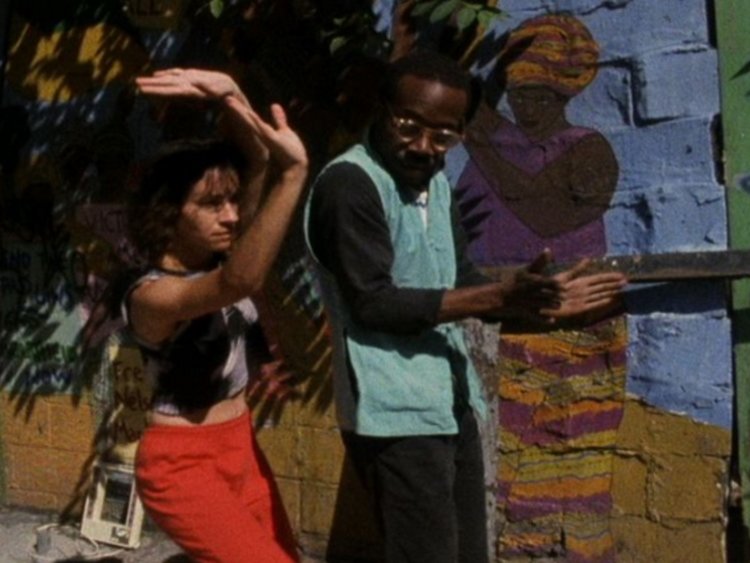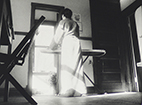12/10/17 // Light Field Program 6
Posted December 9th, 2017 in Co-Presentations, Events and Screenings, News / Events
Light Field Program 6
Sunday, December 10th, 2017 // 5:00pm
The Lab // 2948 16th Street, San Francisco
$6.00 – $10.00 sliding scale ($40.00 festival pass / $30.00 Lab members)
Facebook Event
Co-Presented by Intersection for the Arts’ Intersect San Francisco. This program is co-presented by Canyon Cinema Foundation and composed entirely of films from the Canyon Cinema catalog.
Light Field is an international exhibition of recent and historical moving image art on celluloid, held in the San Francisco Bay Area. It is artist-run and collectively organized by Samuel Breslin, Emily Chao, Zachary Epcar, Trisha Low, tooth, and Syd Staiti. Program 6 is co-presented by Canyon Cinema Foundation.
Light Field Program 6
curated by tooth
EF (Toney W. Merritt / USA / 1979 / 4min / 16mm)
Behind the Scenes (Ernie Gehr / USA / 1975 / 5 min / 16mm)
The Dance of Life (Milada Kovacova / Canada / 1990 / 8 min / 16mm)
“The Dance of Life features the extended monologue of a first generation Canadian woman. This stream-of-consciousness reflects a discourse of existence fractured among many ‘characters’ seen in the film. The Dance of Life is a dizzying exploration of many people in the process of becoming many other people. For inevitably this cyclical dance, this tautology of existence leads us to ‘la vie, c’est la mort.’” -Steve Reinke
Across the Border (Dana Plays / USA / 1982 / 8min / 16mm)
“Completed in 1982, during a period in which many American artists were trying to convey their anger with their own country’s politics. Across the Border transcends the conventions of social documentary as we have come to know it through public television. Instead, Plays manipulates visual elements that compose the image through coloring and fragmentation. She uses this process of deconstruction to lead to a greater understanding of those “man-made” constructs that are responsible for the oppression she has witnessed. But Plays’ message is hardly dogmatic. The subtlety of her collage-like style suggests a very open message, giving the viewer the opportunity to enter the work as a thinking human being rather than a receptacle of one person’s point of view.” -Lynne Sachs
Rocking Chair (Shiho Kano / Japan 2000 /13 min / 16mm)
“Human eye adjusts the brightness of the light automatically, but Camera eye can control the brightness freely. Camera eye can see the darkness in the light of day, and can turn the dusk into the morning sunshine. When the white room is getting darker and lighter, you surely witness that form is sublimated.” -Shiho Kano
Elixir (Amy Halpern / USA / 2012 / 7 min / 16mm)
with Asha Wilson & Joyce Cambell
SSS (Henry Hills / USA / 1988 / 5.5 min / 16mm)
SSS is composed from footage of movement improvised on the streets of pre-gentrified East Village by Sally Silvers, Pooh Kaye, Harry Shepperd, Lee Katz, Kumiko Kimoto, David Zambrano, Ginger Gillespie, Mark Dendy, and others, painstaking synched to music previously improvised for the project at Noise New York by Tom Cora (cello), Christian Marclay (turntables), and Zeena Parkins (harp). Beauty emerging from rubble. Fantastic 80’s fashions.
Study in Diachronic Motion (Peter Rose / USA / 1975 / 3 min / 16mm)
“A first experiment in diachronic motion: the simultaneous presentation of an action from several different perspectives in time.” -Peter Rose
Parcelle (Rose Lowder / France / 1979 / 3 min / 16mm)
“Composed frame by frame in the camera, Parcelle (fragment, particle or bit) rests upon the alternate appearance and variable duration of tiny colored squares or circles placed on black backgrounds and inserted in series between plain white or colored images. Although the film, filmed frame by frame, may appear conventional on a technical level, this is not the case conceptually as it has been conceived to pin point situations requiring the sense of perception to process images in various time lengths according to the characteristics viewed, a procedure which provokes the experience of optical superimpositions on the screen.” -Rose Lowder
Ikarus (Hans Breder/Chuck Hudina / USA / 1973 / 2 min / 16mm)
“A slow-motion dive at 3,000 frames per second.” -Hans Breder & Chuck Hudina
RIP Hans Breder
(October 20, 1935 – June 18, 2017)
Valley Fever (Stephanie Beroes / USA / 1979 / 20 min / 16mm)
“Inspired by Merleau-Ponty’s statement, ‘there is a perpetual uneasiness in the state of being conscious,’ this film has to do with questions of perception, the way we see things. In an experimental, non-narrative context, the film presents a man and a woman who carry on a disjunctive conversation, superficially about the effects of illness on perception, actually about their mutual inability to perceive the world from any other than a personal viewpoint. They each set up a projector and show each other footage of their respective hallucinations under the influence of fever – images of the desert, palms, swimming pools, and the American suburban landscape. The hallucination sequences make a lyrical counterpoint to the formal, structured lip-sync sequences.” -Stephanie Beroes



